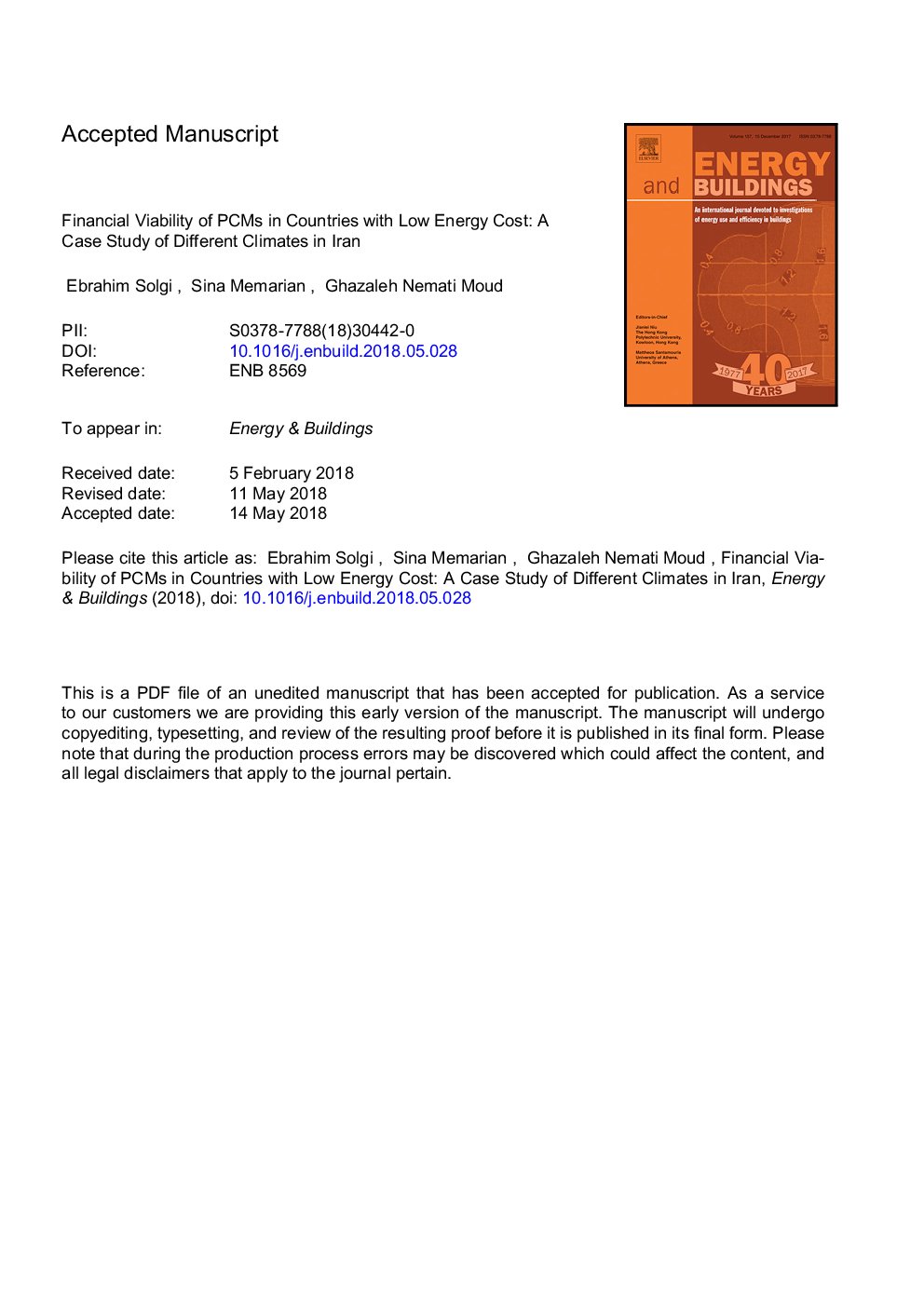| Article ID | Journal | Published Year | Pages | File Type |
|---|---|---|---|---|
| 6727318 | Energy and Buildings | 2018 | 21 Pages |
Abstract
Properties of desirable weight, latent heat capacity, and energy storage capability of phase change materials (PCMs) have led to extensive use of these materials in the building industry as productive thermal mass. This study investigated the feasibility of the utilization of PCMs through numerical simulations in residential buildings located in different Iranian climates in Tehran, Tabriz, Yazd, and Bandar Abbas. In so doing, the optimal PCM for each city was selected based on its impact on annual energy consumption, and then its effects on the indoor temperature and thermal load of the model in the hottest and coldest months of the year were examined. The results showed that the use of PCMs does not lead to significant energy conservation in the hot and humid climate of Bandar Abbas compared with other climates. In the second part of the study, the economic feasibility of PCMs and the payback period of such investment were investigated based on the current local electricity and natural gas prices. It was found that although the use of PCMs leads to significant energy conservation in most of these climates, with the current prices of energy and PCMs in Iran, the use of these materials will not be cost-effective, as the return periods for such investment in Tehran, Tabriz, Yazd, and Bandar Abbas will be 42, 179, 102, and 114 years, respectively.
Related Topics
Physical Sciences and Engineering
Energy
Renewable Energy, Sustainability and the Environment
Authors
Ebrahim Solgi, Sina Memarian, Ghazaleh Nemati Moud,
